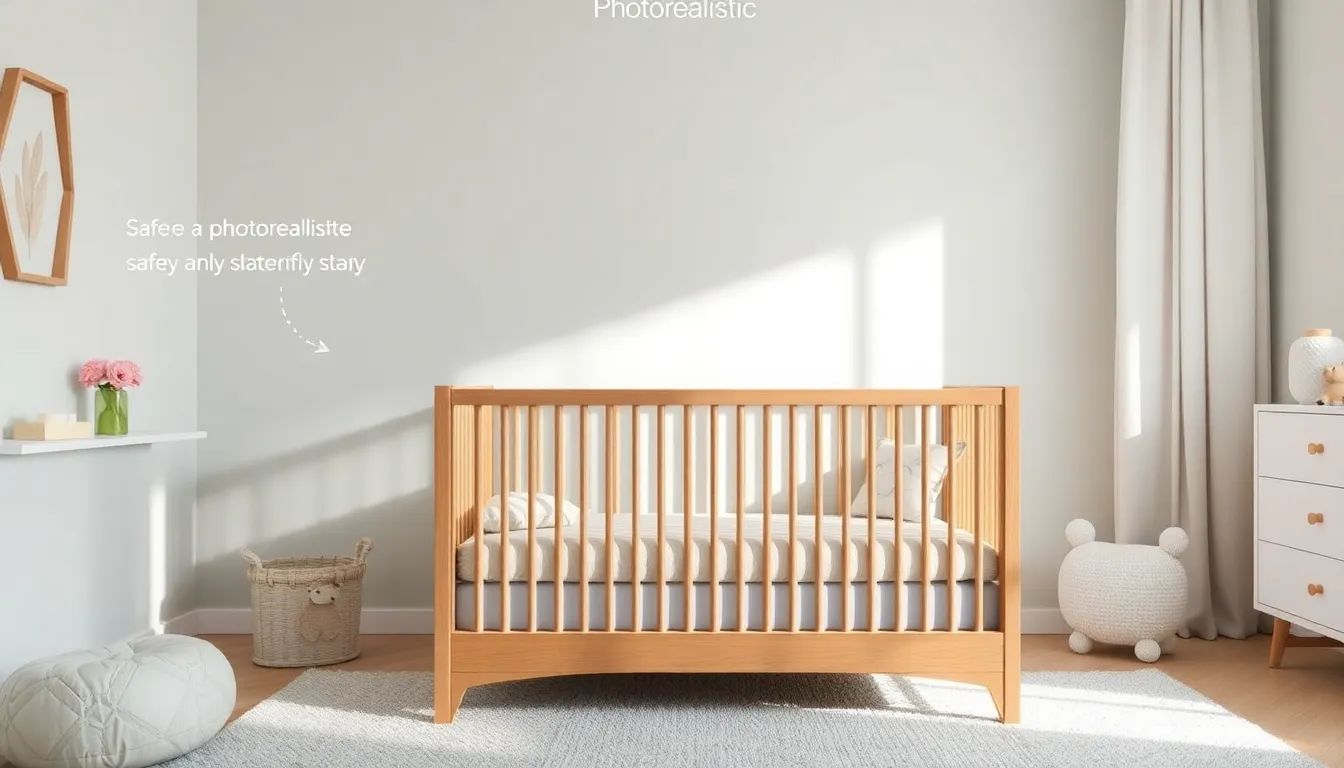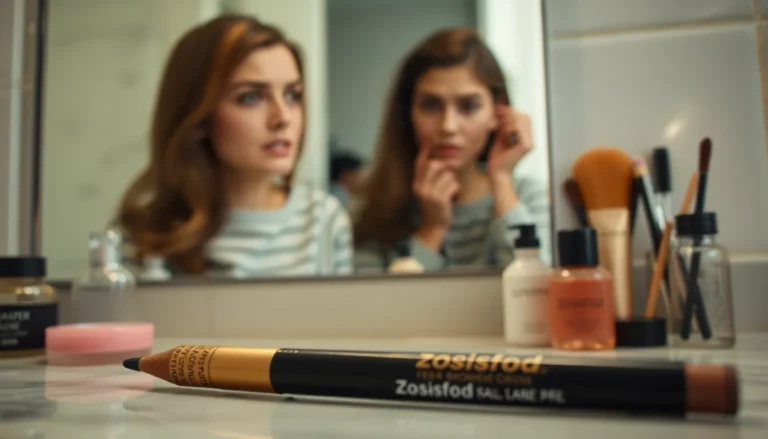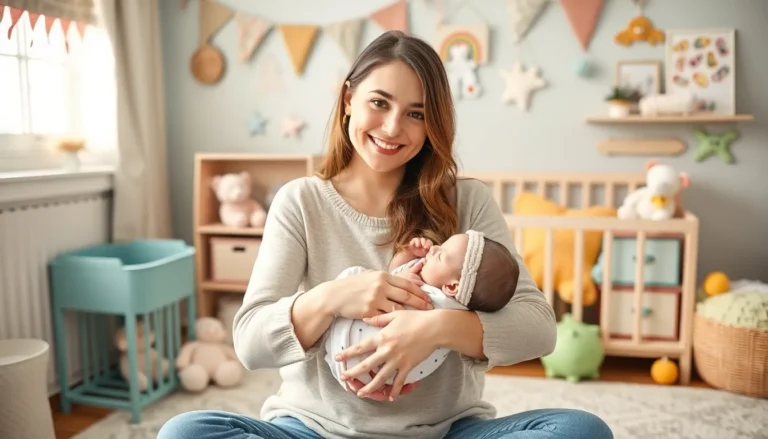Table of Contents
ToggleWhen it comes to creating a safe sleeping environment for infants, crib safety is paramount. Parents and caregivers often feel overwhelmed by the myriad of choices and guidelines, but understanding the essentials can make all the difference. A secure crib not only ensures a peaceful night’s sleep but also protects little ones from potential hazards.
With countless crib designs and safety standards, it’s crucial to stay informed about what truly matters. From choosing the right mattress to ensuring proper assembly, every detail plays a vital role in safeguarding a child’s well-being. By prioritizing crib safety, caregivers can foster a nurturing space that promotes healthy sleep habits and peace of mind.
Importance Of Crib Safety
Crib safety plays a critical role in establishing a secure sleeping environment for infants. Safe cribs reduce the risk of injuries and contribute to a child’s overall well-being during sleep. Statistics show that roughly 3,000 infants die annually due to sleep-related incidents, underlining the necessity of stringent safety measures.
Key factors in ensuring crib safety include:
- Regulated Standards: Cribs must meet the safety standards set by the U.S. Consumer Product Safety Commission (CPSC). Compliance with these standards significantly lowers the risk of hazards.
- Proper Assembly: Assembly instructions must be followed precisely. Misassembled cribs can create gaps where an infant can become trapped.
- Mattress Fit: The mattress should fit snugly against the crib sides. A gap larger than two fingers can increase the risk of suffocation.
- Height Adjustments: Adjusting the crib mattress height as the child grows ensures safety. Lowering the mattress prevents infants from climbing out.
- Avoiding Extra Accessories: Soft bedding, pillows, or toys in the crib present suffocation risks. Keeping the sleeping surface free of these items promotes a safer sleep environment.
By emphasizing these aspects, caregivers can create a risk-free nursery that promotes healthy sleep patterns while providing peace of mind.
Key Safety Standards

Understanding crib safety standards is essential for creating a secure sleep environment for infants. Adhering to specific guidelines ensures that cribs are safe and free from potential hazards.
Crib Design Requirements
Crib design must comply with the safety standards established by the U.S. Consumer Product Safety Commission (CPSC). Key design elements include:
- Slat Spacing: Slat openings must not exceed 2 3/8 inches to prevent an infant from getting stuck.
- Side Height: Cribs must have sides that are at least 26 inches high from the mattress support to help prevent falls.
- Sturdiness: Cribs must withstand a minimum weight load of 70 pounds to ensure stability and durability.
- Corner Posts: Crib corner posts must not protrude higher than the end panels to prevent snagging clothing or accessories.
Ensuring compliance with these design standards significantly reduces the risk of injuries.
Material Safety Considerations
Material selection plays a critical role in crib safety. Consider the following aspects:
- Non-toxic Finishes: Cribs should use non-toxic, lead-free paint or finishes to minimize harmful chemical exposure.
- Durable Frame: The frame must be constructed from solid hardwood or a sturdy composite material to provide lasting support.
- Mattress Law Compliance: Mattresses should meet federal flammability standards, ensuring they don’t pose fire risks.
By focusing on safe materials, caregivers can further enhance the crib’s safety and promote a healthy sleeping environment for infants.
Common Safety Hazards
Common safety hazards in cribs can pose serious risks to infants. Understanding these hazards is crucial for ensuring a secure sleeping environment.
Space Between Slats
Space between crib slats must meet specific safety standards. Slats should be no more than 2 3/8 inches apart to prevent a child’s head from getting trapped. Wider gaps increase the risk of entrapment and injury. Inspect slats regularly for damage or wear, as weakened slats may compromise safety.
Mattress Fit and Quality
Mattress fit and quality play a vital role in crib safety. The mattress must fit snugly against the crib sides with no more than two fingers’ width between the mattress and the crib’s edge. A proper fit minimizes the suffocation risk. Use high-quality mattresses that meet flammability standards and contain non-toxic materials. Regularly check for signs of wear and replace the mattress when necessary to ensure safety and comfort.
Tips For Ensuring Crib Safety
Ensuring crib safety involves regular inspections and implementing safe sleep practices. These measures protect infants and promote a secure sleep environment.
Regular Inspections
Regular inspections of the crib play a crucial role in maintaining safety. Caregivers should check the crib’s structural integrity every month, looking for loose or damaged parts. The slats must remain intact, with no spacing gaps exceeding 2 3/8 inches. It’s essential to examine the mattress for wear and tear, ensuring it fits snugly against the crib edges without allowing more than two fingers’ width between the mattress and the sides. Regularly assess the crib components for any sharp edges or protruding hardware that could pose risks. By conducting these inspections, caregivers prevent potential hazards and ensure a safe sleeping environment.
Safe Sleep Practices
Safe sleep practices significantly enhance crib safety. Infants should always be placed on their backs for sleep, reducing the risk of Sudden Infant Death Syndrome (SIDS). Cribs must remain free of soft bedding, pillows, and toys, which can increase the suffocation risk. Instead, use a fitted sheet designed specifically for the crib mattress and avoid adding blankets until the child is older. Maintaining a clutter-free crib fosters a safe sleep space. Additionally, caregivers should ensure room temperatures remain comfortable, avoiding overheating, which can also pose risks. By following these safe sleep practices, caregivers contribute to the overall well-being of the child during sleep.
Crib safety is a vital aspect of ensuring a secure sleep environment for infants. By following established guidelines and prioritizing safety features caregivers can significantly reduce risks associated with sleep-related incidents. Regular inspections and adherence to safety standards play a crucial role in maintaining a safe crib.
Creating a nurturing space involves not just the right crib and mattress but also safe sleep practices. By keeping cribs free of soft bedding and ensuring proper assembly caregivers can foster healthy sleep habits. Ultimately a focus on crib safety provides peace of mind while supporting a child’s well-being during those essential early years.







